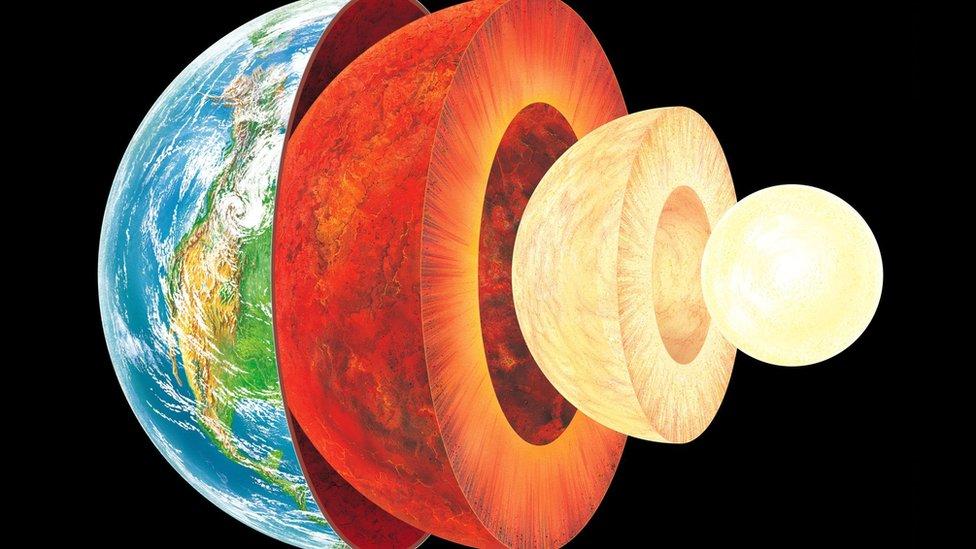
Thousands of kilometers underground, an event occurs that scientists cannot explain.
The fact is that the mass of iron and nickel, the inner core of our planet, is growing faster on one side than on the other.
Revealed by a new study by seismologists at the University of California, Berkeley, published in the journal Natural Earth Science, The area of the center under the Banda Sea in Indonesia is larger than the area at the other end, below Brazil.
Through computer simulations, experts have created a kind of map showing the evolution of the center of the earth over the last 1,000 million years, and it is a “Unbalanced modeWith “new” iron crystals forming very rapidly in the eastern part of the nucleus.
“As some have suggested, the west side looks different from the east side to the center, not just the top of the inner center. The only way we can explain it is to grow faster than one side.” Daniel Frost, assistant scientist at the research project, said in a university report.
According to experts, this phenomenon has implications for the Earth’s magnetic field (which protects us from dangerous particles from the sun) because the latter is convection in the outer core driven by the release of heat from the sun. Inner core.
Findings
The inside of the earth is made up of similar layers of onions.
The last of these has a solid inner core of iron and nickel, with a radius of 1,200 km, about three-quarters the size of the Moon.
It is surrounded by a liquid cast iron and nickel outer core about 1,500 miles thick.
The outer core is surrounded by 2,900 km thick hot rock and the surface is covered with a thin, cold rock crust.
Through the study of seismic waves, experts analyze how these layers work, but over the years they have observed that the waves are not distributed in the same direction as they travel between the poles when they travel in the equator.
This assumption was the basis for understanding that there may be a definite difference in the center of the earth.
“The movement of the liquid iron in the outer core removes heat from the inner core and it freezes,” he told Frost in the journal Live Science.
“This means that the outer core is getting more heat from the east center (under Indonesia) than it is from the west (under Brazil),” he added.
According to the scientist, the best way to see what is happening thousands of kilometers underground is to imagine the trunk of a tree being cut by growth rings starting from a central point.
In this case the center of the rings will be offset from the center of the tree so that the circles are closer to the east and west sides of the tree.
However, scientists explain that this rapid growth in the Indonesian Sea has not left the center unbalanced.
Gravity distributes new growth evenly, keeping the inner central sphere and expanding its radius by an average of one millimeter per year.
Age of fetus
Computer simulations allowed seismologists to establish the most accurate date for the formation of the Earth’s center.
The nucleus is known to have formed when the earth was already organized from concentrations of metals such as iron and nickel.

“We offer very flexible limits between 500 and 1.5 billion years for the age of the inner core, which may help in the discussion of how the magnetic field formed before there was a solid inner core,” said another researcher, Barbara Romanovich. In the study.
“We know that the magnetic field already existed 3 billion years ago, so other processes must have caused convection in the outer core at that time,” he said.
According to research, at the beginning of the Earth’s young history of the inner core, the boiling heat of the liquid core came from light components separated from iron, not from iron crystallization. Currently happening.
Now you can get notifications from BBC Mundo. Download the latest version of our app and activate them so you don’t miss out on our great content.
Now you can get notifications from BBC Mundo. Download the latest version of our app and activate them so you don’t miss out on our great content.





:quality(85)/cloudfront-us-east-1.images.arcpublishing.com/infobae/KTKFKR763RBZ5BDQZJ36S5QUHM.jpg)